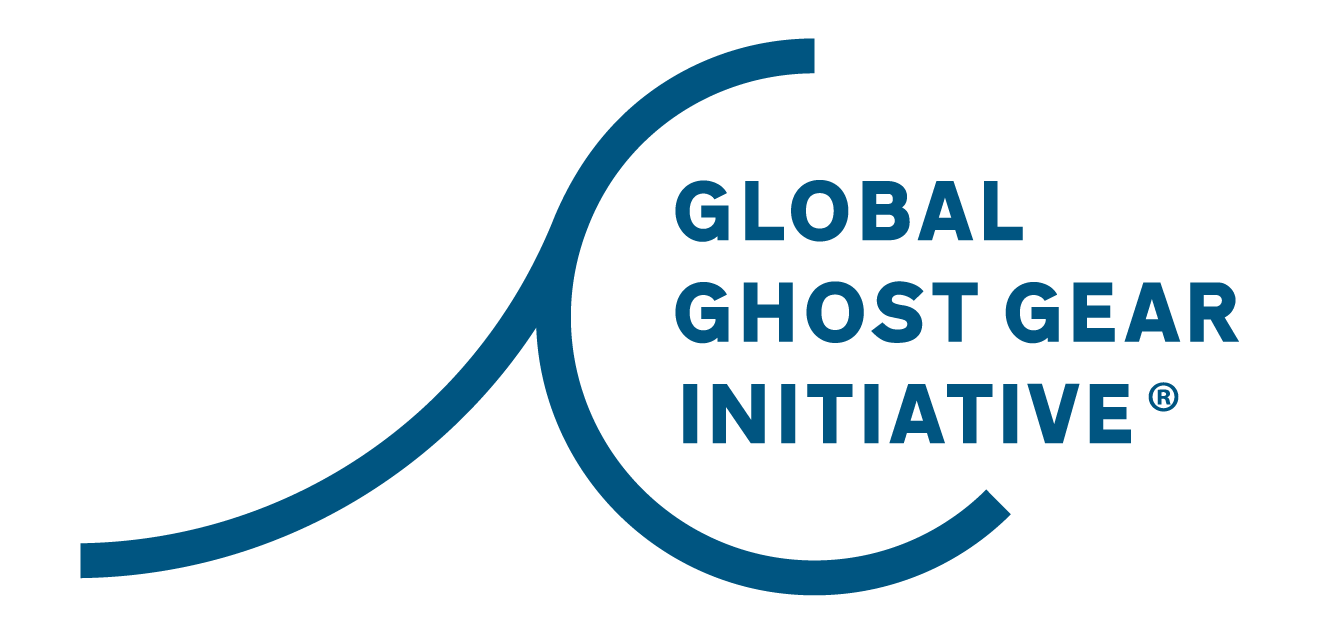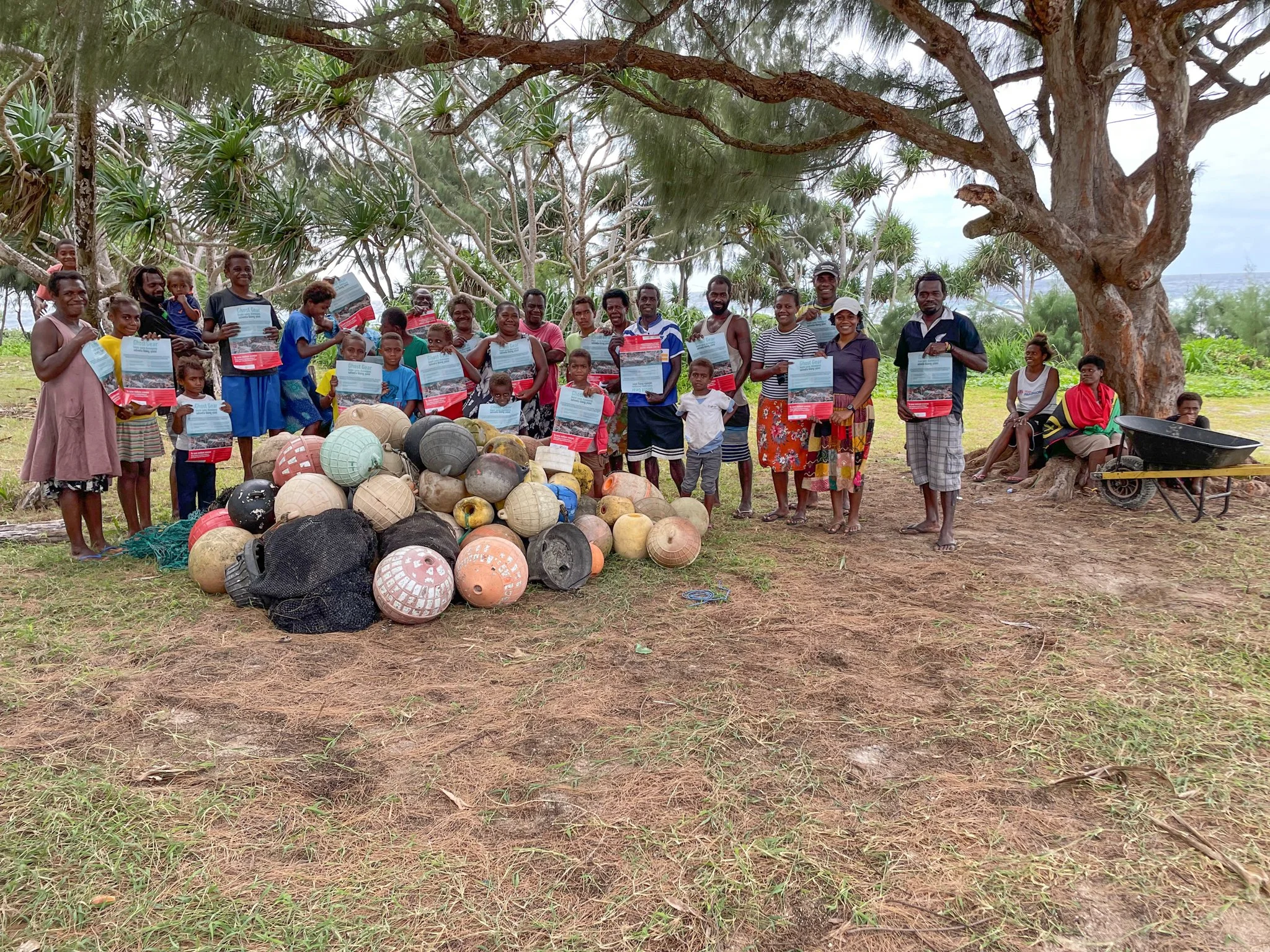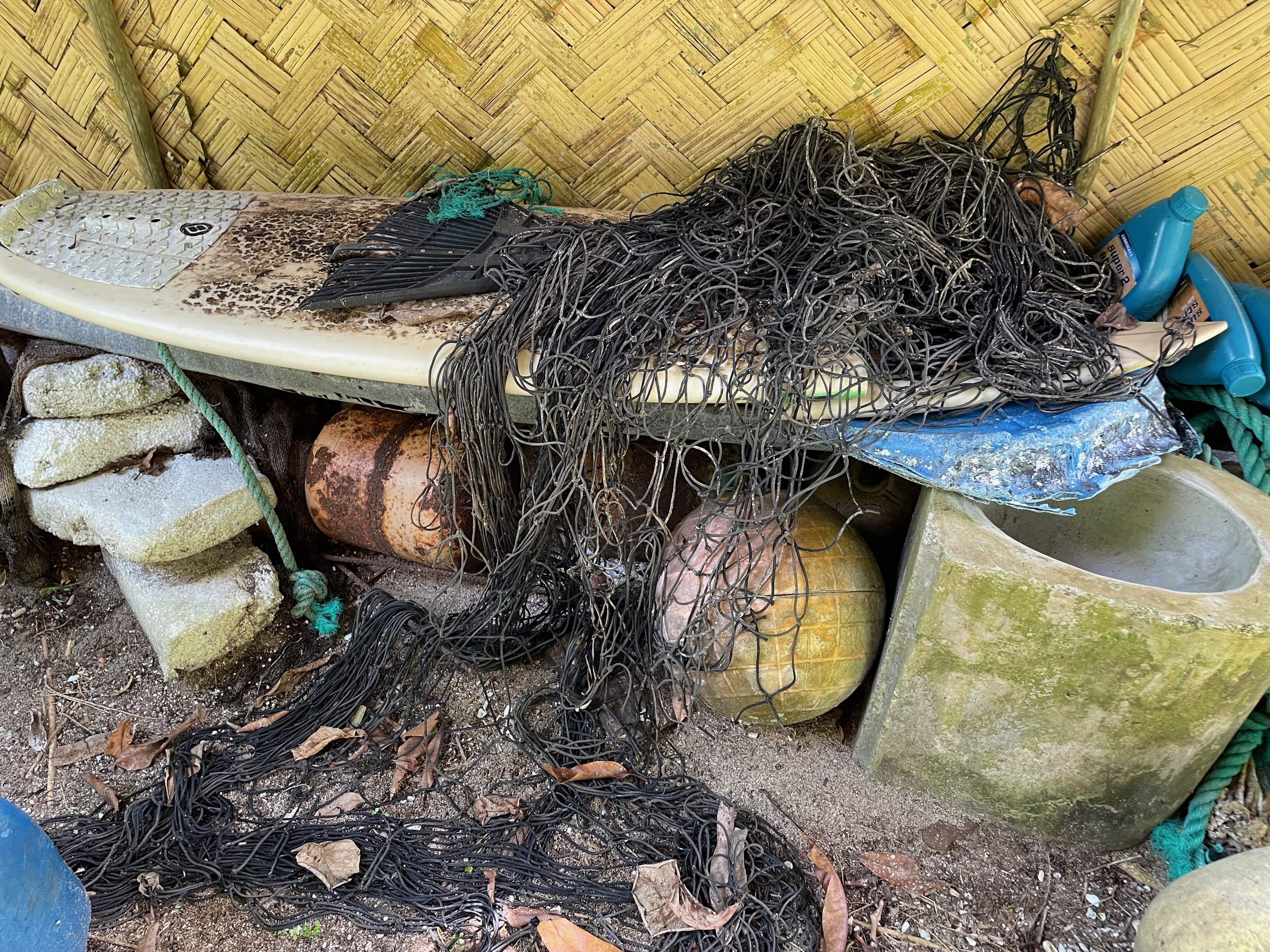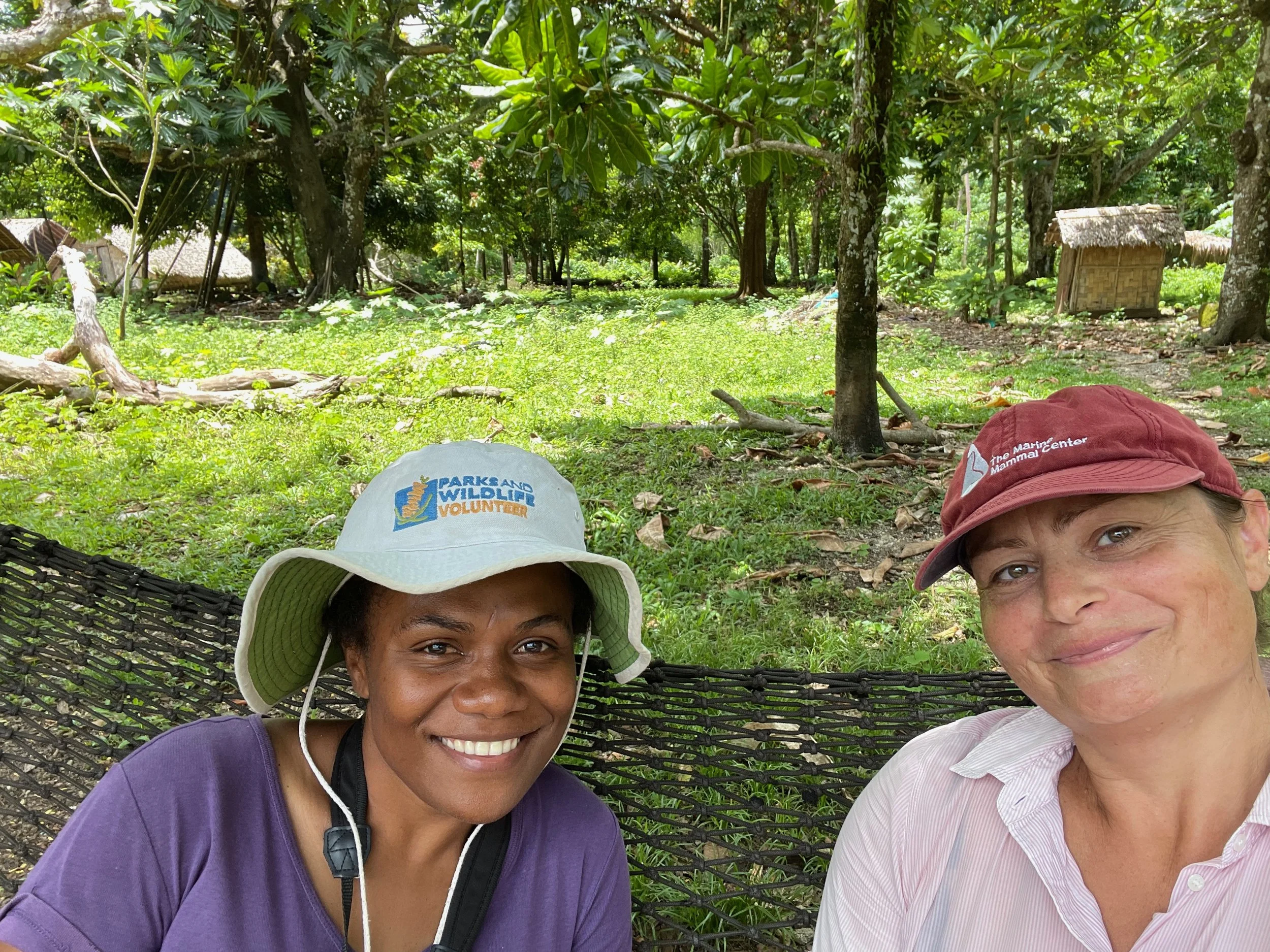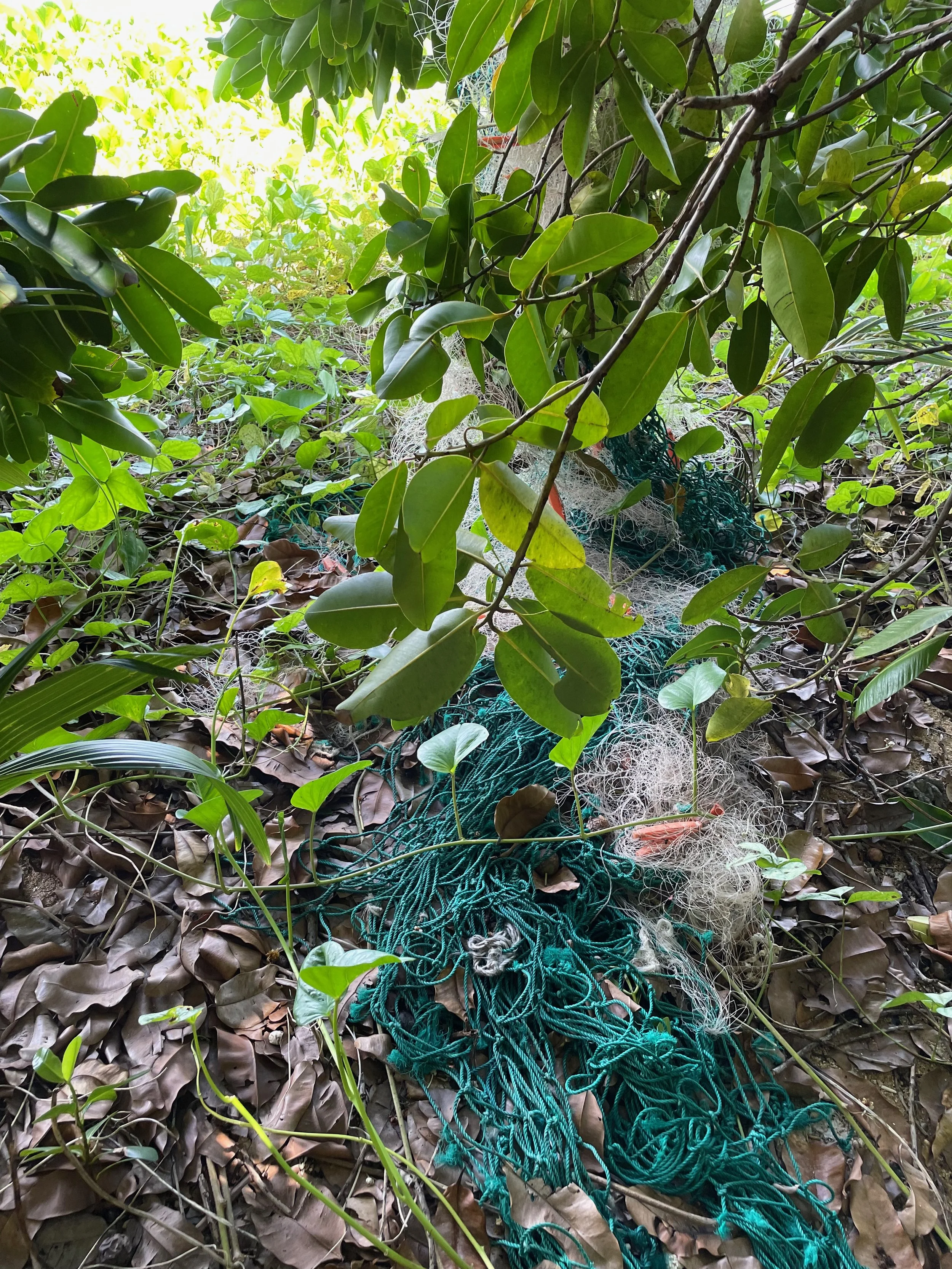GGGI Signature Project - Vanuatu
Project Background
The GGGI has been working with partners—including the Vanuatu Fisheries Department (VFD), Vanuatu Environmental Science Society (VESS) and Natural Resources Consultants (NRC)—since 2017 to increase community uptake of best practices for managing fishing gear in Vanuatu and to gather ALDFG data for the GGGI global data portal. As a continuation of the GGGI’s work in Vanuatu, the project team has built on lessons learned during earlier activities and has expanded engagement with local stakeholders. The project has continued to help raise awareness about ghost gear in Vanuatu while building capacity and generating community buy-in to effectively reduce and prevent gear loss going forward. Overall, the findings and outputs generated through the project will add to the evidence base and help to refine best practices for gear management in Pacific Island nations—where the use of FADs is expanding—with a goal that these best practices can then be adapted and applied to other small island developing states with similar characteristics.
Project Summary
(2023)
The first quarter of 2023 presented significant challenges to the progress of our project work in Vanuatu. In addition to the cyber-attack on the Government of Vanuatu in November 2022 that continued disruption into 2023 to emergency services, government emails, phone lines, and other critical information infrastructure, the beginning of 2023 also saw a series of natural disasters in Vanuatu. An earthquake of magnitude 7.0 struck 25 kilometers off of the northern coast of Vanuatu’s Espiritu Santo Island on January 9, 2023. Cyclones Judy and Kevin, both with category 4 intensity, hit Vanuatu on March 1 and 3, 2023. A 6.6 and a 5.4 magnitude earthquake struck Vanuatu on March 3, 2023, and a series of smaller earthquakes also occurred in late March 2023. As such, understandably, project activities were consequently delayed.
Nevertheless, following the success of the pilot for a fishing gear buy-back program that the Vanuatu Environmental Science Society (VESS) conducted on the island of Efate in 2022, another buy-back was planned for Espiritu Santo. Santo was chosen as a favourable location for the second buy-back because the results from previous surveys of fishing gear revealed a lot of gill nets on the reefs off the south coast of Santo. However, the Santo buy-back did not have the same success rates as the Efate buy-back. Some reasons it was not as successful include logistical challenges (Santo is more remote than Efate), insufficient communications, lack of will of community members to travel to a buy-back location, and general lack of awareness of the issue of ALDFG. As a result, VESS pivoted the project and conducted an additional successful buy-back in Eton village on Efate. Interestingly, different gear types dominated the material brought to the 2023 buy-back compared with the buy-back in 2022, with satellite buoys (almost certainly from drifting FADs) being much more represented in 2023.
Key results:
41 people brought fishing gear to the buy-back locations: three to Luganville on Espiritu Santo and 38 to the village of Eton on Efate. Of the participants, 59% were male and 41% female.
192.2 kilograms (kg) of fishing nets were collected at the two buy-back locations, with 46 kg and 2.5 kg of gill nets collected at Santo and Eton respectively, and with 143.7 kg of purse-seine type nets collected at Eton.
298 longline buoys and foam floats were collected, all at Eton.
17 satellite buoys and one weather buoy were collected at Eton.
Fishers were paid 339,800 Vanuatu vatu, the currency for Vanuatu, for the fishing gear brought to the sites.
More research is needed to understand the motivations of people to participate in the buy-backs and also to understand any trends in foreign gear beaching on the coastline. These ad hoc pilot buy-backs have allowed us a much better understanding of the local and nonlocal fishing gear that is present in villages in Vanuatu. Finding a sustainable funding mechanism for a more structured program for the buy-backs would provide more clarity to the communities and the organizers and also would have more impact at a wider scale.
Project Summary
(2022)
During 2022, project activities focused around three key areas. The first activity involved scaling up the testing of new gear-tracking technologies specifically to track anchored FADs (aFADs) in Vanuatu if they break loose from their moorings. Two different gear-tracking technologies were tested during this project phase: Blue Ocean Gear’s (BOG) Farallon Smart Buoys and Collecte Localisation Satellites’ (CLS) Novel Argo Observing System (NAOS) GenTrackers. Working with VFD, BOG and CLS to test the gear-tracking technologies and helped to identify strategies for efficiently deploying and monitoring tracking devices in Vanuatu. This in turn will reduce the likelihood of aFADs becoming lost and potentially damaging the environment if they drift into coral reefs or other sensitive habitats. The BOG units effectively tracked aFAD locations at sea, and were able to withstand regular submersion in high current areas; the CLS NAOS GenTrackers performed well tracking aFAD locations in low-current areas under normal weather conditions. Extreme weather events can affect both types of units but seemed to have a greater impact on the CLS units, as these are more likely to stop working when submerged. VFD can use this information to refine when, where and which types of tracking units are deployed as Vanuatu’s aFAD program continues to grow. Convening VFD staff from different divisions for the capacity-building workshop helped to break down institutional silos and further integrate the aFAD tracking program across the department.
The second activity involved convening a stakeholder training workshop on best practices for gear management. In December 2022, the GGGI—together with NRC, VFD and VESS—convened a two-day workshop in Port Vila to build capacity for reducing ALDFG and for improving aFAD management and tracking in Vanuatu. Among the 18 participants were representatives from BOG, CLS and UN FAO’s FishFAD program, in addition to the GGGI, VESS, NRC and VFD staff. To strengthen integration of the aFAD tracking program across VFD, staff from VFD’s research, compliance, community-based fisheries and development and fish capture divisions participated in the workshop. Presentations featured project results to date, an overview of Vanuatu’s aFAD program and of the BOG and CLS tracking units, protocols for retrieving lost aFADs, and other efforts to address ALDFG in Vanuatu—including and EOL fishing gear buy-back scheme led by VESS. Participants were highly engaged in the workshop, and there was ample time dedicated to in-depth discussion and next steps, such as improving coordination between VFD’s development division (which is responsible for deploying aFADs) and the research division (which is responsible for deploying aFAD tracking units). The workshop also allowed for BOG and CLS personnel to conduct in-person training on the units and on their respective web interfaces.
During the workshop, key priorities identified—which will be used to help inform future work in the region—include:
Reviewing fishing regulations concerning gillnets and the draft FAD management strategy;
Aligning ALDFG management within the Vanuatu National Action Plan for Marine Debris;
Raising awareness about project results with Vanuatu government agencies;
Using additional data to identify potential hotspots for fishing and gear loss;
Training on the use of the GGGI Ghost Gear Reporter App and Global Data Portal;
Removing gillnets from Banban (an area in southeast Espiritu Santo, Vanuatu’s largest island, which has been identified as a hotspot for gillnets);
Providing assistance for cleanups called for in community management plans; and
Continuing to research additional locations of gear loss.
The third activity involved expanding the EOL gear buy-back pilot program to a new site. The buy-back program has offered a way for fishers to return their nets at the end of their useful life and receive a small payment for doing so. This allows for the EOL nets to be collected in a responsible manner (rather than being disposed of at sea due to a lack of alternatives) while giving a small extra source of income to local fishers. Building on the successful gear buy-back piloted on Vanuatu’s island of Efate earlier in the project, VESS planned to host a buy-back on Espiritu Santo during this project period. VESS selected the Espiritu Santo location based on ghost gear surveys showing many gillnets on the reef off the south coast of that island. The original plan to host the buy-back in December 2022 was thwarted by a significant cyberattack on Vanuatu’s government computers, which made it difficult for VESS to communicate with fisheries officers in Espiritu Santo to organize the event. As a result, this activity was pushed into 2023.
Project Summary
(2021)
The GGGI continued its collaboration with the Vanuatu Environmental Science Society (VESS) and the Vanuatu Fisheries Department to retrieve ALDFG from identified hotspots, pilot innovative tracking technologies, create a predictive model of ghost gear hotspots, and build the regional capacity for implementing best practices for gear management.
Because of variation in tides, Vanuatu’s anchored fish aggregating devices (aFADs) are exposed to submersion periods of varying duration and depth. Previous gear tracking technologies piloted in this region were not designed for anchored fishing gear and could not withstand periods of submersion at depth. New ‘Smart Buoy’ devices from Blue Ocean Gear were piloted by the Vanuatu Fisheries Department to determine whether the devices were viable for reducing aFAD loss. Additional training was provided by Collecte Localisation Satellites (CLS) for the deployment and monitoring of their tracking devices. Unfortunately manufacturing and shipment of these devices was delayed due to the Covid 19 pandemic, and so the pilot phase will be conducted in a future iteration of the project.
VESS conducted snorkel surveys of multiple sites where ALDFG had been reported. These verification surveys informed the creation of a model that predicts where gear loss is most likely to occur. The verification surveys and predictive model informed gear retrieval efforts undertaken by VESS in hotspots around the country. Data collection efforts from this project contributed to the global database housed by the GGGI’s data portal.
Vanuatu Project activities for 2021 were supported through funding from the Government of Canada’s Sustainable Fisheries Solutions and Retrieval Support Contribution Program (Ghost Gear Fund), building on the GGGI’s past efforts in the region, which began in 2017.
(2020)
With funding from the Government of Canada’s Sustainable Fisheries Solutions and Retrieval Support Contribution Program (Ghost Gear Fund), the GGGI will continue its work in Vanuatu, building on our previous work supported by the Belgian and UK Governments. The project involves tracking of anchored Fish Aggregating Devices (aFADs) using innovative technology; providing capacity building and training opportunities for local authorities to incorporate this new technology in fisheries management activities; building out a predictive ALDFG model through analysis, on-the-water surveys, and ground truthing across 10-15 sites to better understand where and why gear is lost; conducting in-water gear removal from a coral reef system; and developing an accompanying gear removal protocol.
Data gathered from these activities will also be added to the GGGI data portal and be used to train local stakeholders to monitor aFADs. Project activities will be carried out in partnership with Natural Resources Consultants, the Vanuatu Environmental Science Society (VESS), and the Vanuatu Fisheries Department.
(2019)
In response to the United Nations Committee on Fisheries (COFI) 33’s request that the United Nations Food and Agriculture Organization (UN FAO) continue addressing ghost gear, FAO and the GGGI furthered their partnership by convening a series of four regional workshops in 2019 on best practices to prevent and reduce ghost gear. The four regions identified by FAO as those with the greatest need were: Southern-Western Pacific, Southeast Asia, West Africa and Latin America/Caribbean.
The four workshops primarily focused on building capacity and raising awareness of how to prevent ghost gear drawing on both the GGGI Best Practice Framework for the Management of Fishing Gear (C-BPF) and the FAO Voluntary Guidelines for the Marking of Fishing Gear (VGMFG). The workshops also helped identify baseline information on the main causes of gear loss in each region; the prominent types of fishing gear that get lost in each; and ghost gear hotspot areas to help formulate effective, locally relevant mitigation strategies.
One of these workshops was held in Port Vila, Vanuatu in May 2019 at the Warwick Le Lagon. 27 participants from 14 countries attended the workshop, which was facilitated by Natural Resources Consultants. A field trip was also organized to visit the beautiful Port Vila Harbor by boat and the fish markets in Port Vila proper, allowing participants the opportunity to witness firsthand fishing operations in the Pacific.
(2018)
The GGGI, in collaboration with the Kingdom of Belgium, and coordinated by World Animal Protection, conducted the first phase of this project focused on the management of FADs in the South Pacific. Increased use of FADs, particularly their prominence in commercial tuna fisheries, has led to concerns and is driving an urgent need for improved management measures to ensure future sustainability of the fishery as fishing effort increases. The focus was on looking at the role of marking and tracking, along with other management measures, to prevent the creation of ALDFG and its related impacts on habitats and wildlife. The project was executed in two complementary strands. The first strand of the project was to audit the FAD policies and operations in the South Pacific of a large commercial tuna company, with a goal to develop recommendations for increased integration with the GGGI’s Best Practice Framework for the Management of Fishing Gear. The project also served as a case study focused on the implementation of best practice management methods for FAD marking and tracking for the FAO Technical Consultation on the Marking of Fishing Gear in February 2018.
The second strand of the project involved trialing anchored fish aggregating device (AFAD) position tracking technology in Vanuatu. The objectives were to evaluate their effectiveness, recommend protocols for monitoring the positions of the artisanal AFADs to aid in their retrieval, and recommend potential responsible disposal, retrieval and recycling/re-use opportunities for end-of-life AFADs. Methods for marking AFADs to increase visibility and identification, with an aim to reduce risk of damage, loss and interference were also trialed. The interim findings from this work were compiled into a report used at the FAO Technical Consultation. Phase 2 is based on the overarching project goal of reducing or eliminating habitat damage caused by lost FADs by preventing lost FADs from reaching vulnerable nearshore areas. An ancillary goal was to reduce entanglement of non-target species in FADs through promotion of feasible non-entangling and biodegradable FAD materials.
(2017)
The GGGI launched the first phase of a solution project focused on the management of fish aggregating devices (FADs) in the South Pacific in 2017. The project was focused on gear marking and tracking, along with other management measures, to prevent ALDFG and its related impacts. The project began in two strands. The first strand of the project was to review a major seafood company’s FAD policies and operations in the South Pacific to make recommendations for increased integration with the GGGI’s Best Practice Framework for the Management of Fishing Gear (C-BPF). The second strand of the project was to trial artisanal fish aggregating device (AFAD) position tracking technology in Vanuatu. We evaluated the effectiveness of the technology from Pelagic Data Systems, recommended protocols for monitoring the positions of the AFADs to aid in their retrieval, and recommended responsible disposal, retrieval and recycling/re-use opportunities for end-of-life AFADs. We also trialed methods for marking AFADs to increase visibility and identification, with the aim of reducing risk of damage, loss and interference.
Project partners
Partners
Blue Ocean Gear (BOG)
Collecte Localisation Satellites (CLS)
Natural Resources Consultants (NRC)
Pelagic Data Systems (PDS)
Vanuatu Environmental Science Society (VESS)
Vanuatu Fisheries Department (VFD)
Funders
Government of Belgium
Government of Canada
Government of the United Kingdom
